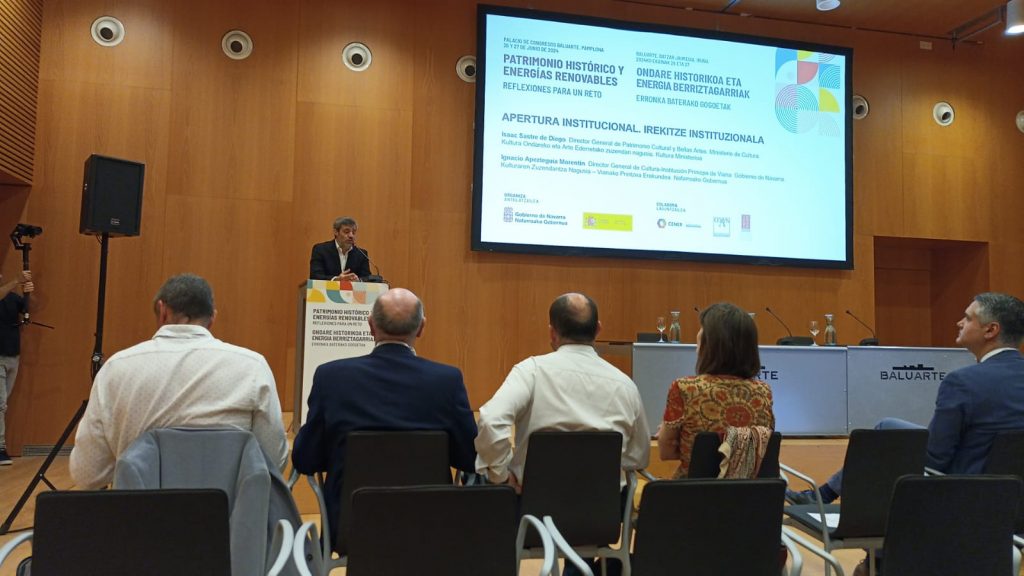The concept of Heritage Impact Assessment (HIA) is derived from the Environmental Impact Assessment (EIA) but, as a result of the calls for attention made by ICOMOS, the international community has considered how to improve these procedures for the management and protection of heritage.
With the incorporation of the concept of heritage value, the aim is to ensure that the assessments are based on a complete analysis of the cultural relevance of each property, and therefore make the procedures more complete and cover a wider range of cases.
The Heritage Impact Assessment is emerging as a key tool to ensure that urban development and interventions in the territory respect and preserve the cultural heritage.
The concept of Heritage Impact Assessment (HIA) is indebted to the Environmental Impact Assessment (EIA), both in terms of its implementation and its mechanics. The impact of new works and constructions on assets with recognized heritage value is already incorporated in the EIA, the ex-ante assessment that is processed in order to foresee and reduce the possible alterations that these works may cause in the natural and social environment. However, following the calls for attention made by the International Council on Monuments and Sites (ICOMOS) in 2005 (Xi’an Declaration) and 2011 (EIP Guidelines), the international community has considered how to improve these procedures so that they take into account specific principles specific to the discipline of heritage management and protection.
The main indication of ICOMOS is that the evaluation should be based on the effect that the changes may have on the heritage values of the protected properties, something that was not fully considered until now, since the EIAs were concerned with elementary risks, such as the alteration of archaeological remains or visual impacts on heritage properties and ensembles. With the incorporation of the concept of value, ICOMOS seeks to ensure that the evaluations are based on a complete analysis of where the cultural relevance of each property lies, and therefore make the procedures more complete and cover a wider range of cases.
Since this call, the international community has been seeking methods to objectively assess the impacts on cultural heritage. The process should highlight both the negative effects and the benefits of different possible courses of action on its tangible and intangible values. A clear reference is the basic procedure established by the EIAs themselves, which is based on the calculation of future scenarios predicting the consequences of each of them, so that they can be compared, the most favorable ones chosen, or mitigation measures designed.
The complexity lies in several aspects. In the first place, the concept of cultural or heritage value is subject to the interpretation of the goods made by different individuals, social groups or historical moments. If it is difficult to define them, it is even more difficult to situate them, delimit them in space and quantify them. However, the idea of value is the most versatile we have, and a concept of reference for the management of heritage assets, both for ICOMOS and for legislation concerning cultural heritage in Spain. Secondly, the prediction of impacts and the recreation of possible scenarios are technically complex and involve the uncertainties characteristic of any futures study. Finally, the protection of cultural heritage has an important legal and administrative dimension, and procedures must be both simple and compatible with the guidelines and standards in force in day-to-day heritage protection.
The Andalusian Historical Heritage Institute has accumulated years of experience in the analysis and study of the heritage values of immovable heritage. Its work has tested these concepts for heritage of various types, including industrial and modern movement architecture, which are usually less recognized. He is currently exploring the possibilities of impact assessments in the STEP project on the specific topic of renewable energy technologies. He also participates in the WHATS-UP project, led by the University of Seville, which approaches from a broader perspective world heritage sites of the highest importance and complexity in Spain: the Alhambra in Granada and the Reales Alcazares in Seville.
With these advances, the Heritage Impact Assessment is emerging as a key tool to ensure that urban development and interventions in the territory respect and preserve the cultural heritage.
Read more:
ICOMOS – Xi’an Declaration:
https://www.icomos.org/images/DOCUMENTS/Charters/xian-declaration-sp.pdf
ICOMOS – Guidance on Heritage Impact Assessments for World Cultural Heritage properties:
https://icomos.es/wp-content/uploads/2021/01/Estudio-de-Impacto-Patrimonial.pdf
WHATS-UP project:
https://storymaps.arcgis.com/stories/584beccee0724a0194b4412e5fcbabd5
“The WHATS-UP research project proposes methodological innovation for impact assessment on world heritage properties.”
https://www.iaph.es/revistaph/index.php/revistaph/article/view/5640


